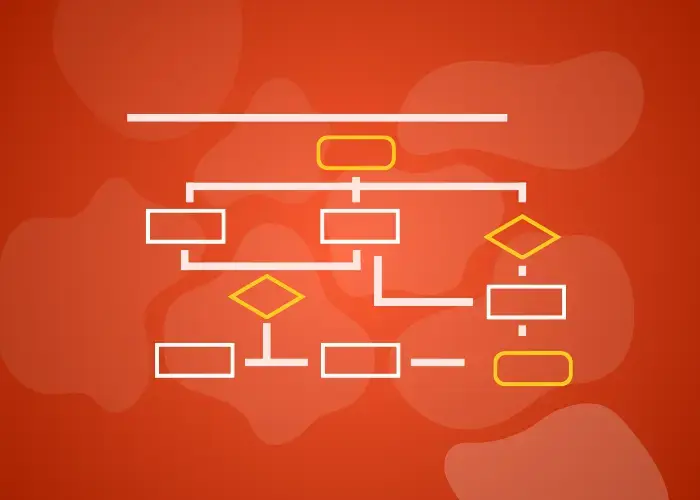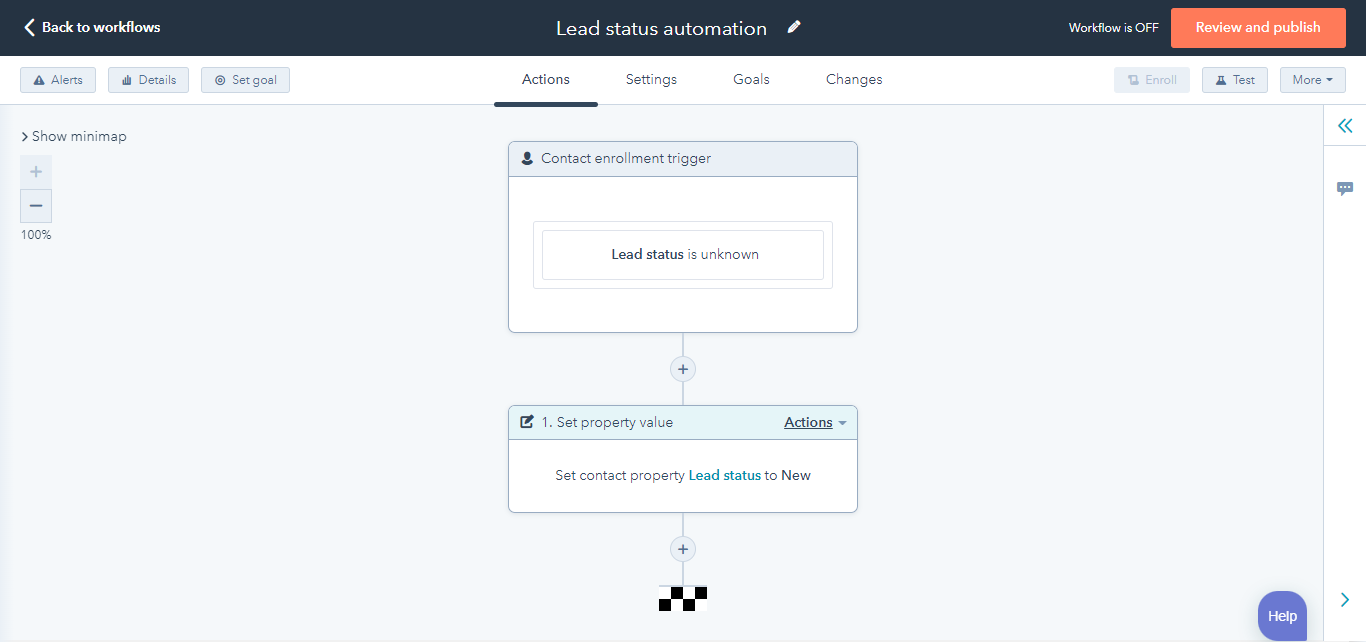HubSpot Sequences vs Workflows [Differences Explained]
HubSpot Workflows vs Sequences, two features for some while a mere confusion for many! This Brief guide will cover everything you need to...

13 Best HubSpot workflow examples that you need to use right now to take your business operations to the next level.
A workflow is a structured sequence of tasks or actions designed to accomplish a specific goal or process efficiently. It defines the order in which tasks are executed and often includes decision points and dependencies. They can be visualized as flowcharts or diagrams, making complex processes easier to understand and manage. Following are 13 HubSpot Workflow Examples that HubSpot Professional Plan users can utilize:
Before diving into the details of each example, let's discuss some basics about workflows.
HubSpot workflows can be defined as a series of automated actions that are triggered based on certain conditions. They are used to automate repetitive marketing, sales, and service task.
Each workflow involves a trigger and an action. For example, if you want to send a thank you email every time someone signs up on your website, your trigger would be the user signing up and its action would be the specific email sent to him.
The main purpose of using HubSpot workflows is to increase operational efficiency, save time, and increase alignment between sales, marketing, and service departments.
Companies today face different challenges and problems with marketing automation and sales automation. To give you an idea on how to use these automation/workflows here are some HubSpot workflow examples that we think can help your business.
One of the most important HubSpot workflows that you can use for your business is lead assignment. The basic concept behind the lead assignment is that whenever a lead is generated, it is assigned to the most relevant salesperson. Some companies generate numerous leads daily, so manually assigning leads to sales representatives can become next to impossible and practically inefficient. This is where you can take the help of HubSpot workflows.
To understand this workflow better let's take some examples. Let's say you are operating your business in two countries which are Canada and the US. You want the leads from Canada to be automatically assigned to Adam while the leads from the US should be assigned to Jacob, so, we can use HubSpot workflows for assignment.
Various lead assignment criteria can be used e.g. availability, time of form submission, specialized area, or round-robin.

One of the most important insights regarding a lead is at which stage of the sales funnel the lead is currently placed. The sales and marketing department needs to determine this because they will engage the lead with content that is relevant to the lead’s stage of the buying journey. Determining the Lead’s lifecycle stage is also important if the company wants HubSpot’s lead scoring feature.
When the lead satisfies the criteria of being a Marketing qualified lead (MQL), Sales qualified lead (SQL), Opportunity, or Customer, it's very important to update that, and manually changing each lead’s lifecycle stage is not an efficient way of doing this task. For example, if a lead is working in a particular industry such as Health and Fitness, and is, therefore, considered to be a marketing-qualified lead you can use a workflow to automatically change its lifecycle stage.
.
Leads are very valuable to every company and most companies spend a large amount of their budget just to generate relevant leads. Once the lead is generated, the next step for the marketing team is to nurture it by following up at regular intervals to convert it into a sales-ready lead to opportunity.
Let’s say, a contact has submitted a form on your marketing agency website. You would want to follow up with this contact a week later by sending a pdf of the "SEO checklist" through email that you think the contact might find useful and would push the contact to the next stage of the buying journey. In such cases, we use HubSpot workflows to automatically send emails after set intervals so that we never miss out on valuable lead that has a chance of converting in the future.

If you want to notify your sales or service team regarding anything such as a change in the deal stage or to just remind them about following up on a particular lead, you can use HubSpot workflows.
Let’s say, sales representatives work on a deal until the deal has either been won or lost. In this case, the manager might want to get notified once the deal has been either won or lost and this is where HubSpot workflows help. You can use HubSpot workflows that will automatically notify the sales manager every time a deal closes.
This HubSpot workflow example also illustrates the extent to which you can have your operations automated.

The ticketing system is commonly used by the customer service team so that they can resolve the issues that are raised by the customer. The idea behind the ticket feedback system is to get feedback in terms of how your customer service team responded to help the customer with the issue. By doing this, valuable information is gathered to make the service even better than the last time.
Let’s say, as a departmental head of the service department you’d like to get feedback from customers about how well they responded to their issues so that they can improve their customer service. In this case, you can use HubSpot workflows where once the ticket closes an email will be sent after 2 days to the client where he can give his feedback.
Once enough feedback has been collected you can use that to improve your service better.

HubSpot workflows can also be used to promote an event or a webinar in a more composed way. For instance, if you are organizing a webinar after 30 days you can use HubSpot workflows to perform multiple tasks for you. Firstly, you can send an email to your contact list informing them about the event.
Secondly, you can create date-based workflows to send pre-webinar reminders multiple times and post-webinar recordings and follow-ups to increase the attendance and engagement of registrants.

Welcome emails are very popular nowadays among marketers since they instantly try to build a relationship with prospects or customers. The perfect time for you to get in touch with your potential lead is when they give you their details. You would want to capitalize on it and get in touch with them as soon as possible so that the lead feels that you value them.
For this purpose, you can use HubSpot workflows. For instance, if a potential lead has recently filled out a form on your website or signed up on your website., you should send them a welcome email. By setting up HubSpot workflows for welcome emails, when a new contact submits his details, he will be sent a welcome email.

Another important workflow that you can use is to send automatic SMS reminders to the contacts who have booked a meeting with you. Most of the time, contacts will book a meeting with you but won’t show up. According to our experience, this is usually because they just forget about it.
In this case, it is your responsibility that you don’t let such leads slip through the cracks, and the way you do this is by sending them an SMS reminder. For example, if a contact has booked a meeting with you on your website after 5 days, you must send a reminder SMS 2-3 hours before the meeting. For this purpose, you can set up a workflow where an automatic SMS will be sent to the person who has booked a meeting with you. This way you’ll be able to ensure that you can capitalize on every opportunity that comes to you.
To manage this automation, we may need Ops Hub Professional in HubSpot or external tools like Zapier along with HubSpot.
For most businesses, contact doesn’t become a customer overnight. It moves through a deal pipeline that has different stages and sometimes different owners or departments manage different stages. For this purpose, it is very important that whenever a lead moves to the next stage the relevant person is notified and assigned.
Similarly, deals can be moved automatically across different stages based on certain criteria like "Meeting booked" or "Proposal Sent". It also increases operational efficiency and generates tasks automatically.

Most companies’ main way of building their contact list is through form submission. A lot of customers will be coming onto your website and submitting their contact information. You must keep these contacts engaged from when they submit their contact information until they become your customers and even after that.
For example, if a visitor has filled out a form on your website you can send the following series of emails:
Email 1: Welcome email
Email 2: Offer a PDF guide that gives a solution to their problem
Email 3: Offer another PDF that helps the visitor understand why your services can help their business.

Lead status is an important way of knowing at which stage a particular lead is before becoming an opportunity. Lead status is an important criterion for filtering the leads. You can set up a lead status automation workflow where the lead status will change automatically and you won’t have to do it manually for each lead. Normally, when a new contact is made the lead status of the contact is unknown but with this workflow, you can automatically change it to "New". Similarly, we can make a workflow to change lead status to "Contacted" when "Last Contacted Date" is known.

A successful business leaves no leads to slip through the cracks. So to make sure that you don’t overlook any lead you need to set up a workflow that will give a reminder to your sales representatives to follow up on a lead again.
Let’s say, a lead was contacted, but it was determined that the lead is not ready to make a purchase decision. For such leads, you can set up a workflow where the sales rep will be reminded to follow up with leads that are more than 8 weeks old. Therefore, you will maximize your chances of converting an old lead into a customer or client.

In many circumstances, a visitor to your shopping website might not complete the checkout resulting in the lost revenue potential.
For such visitors, you can make a workflow where upon cart abandonment they will be sent an email reminding them about the items in their cart along with a discount code.
This automation is possible with e-commerce tool integration with HubSpot.
![HubSpot Sequences vs Workflows [Differences Explained]](https://www.3andfour.com/hs-fs/hubfs/HubSpot%20Workflow%20vs%20Sequences.webp?format=webp&width=400&height=250&name=HubSpot%20Workflow%20vs%20Sequences.webp)
HubSpot Workflows vs Sequences, two features for some while a mere confusion for many! This Brief guide will cover everything you need to...

Automate your marketing efforts with these marketing workflow examples that streamline tasks, improve lead nurturing, and enhance customer engagement.

Boost your sales efficiency with these automated sales workflow examples that simplify repetitive tasks, reduce errors, and improve customer...